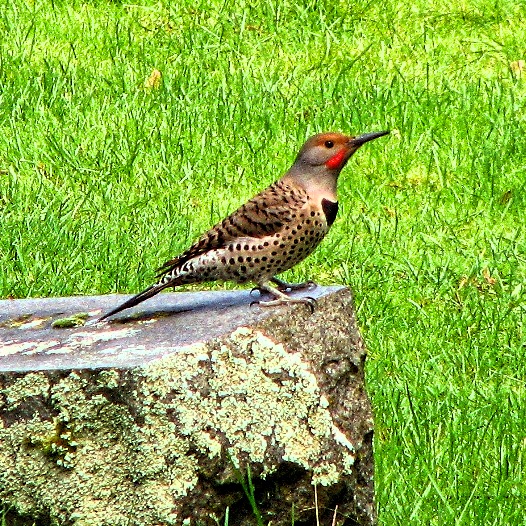
This is a large (12” tall) brown (with black barring and speckles) woodpecker of forest edges and openings, with a distinctive white rump that is easily visible in flight. They feed extensively on the ground, targeting beetles and especially ants, which can make up 45% of their diet. They manufacture an antacid saliva to neutralize the formalin in ants. It also utilizes their formalin, which is toxic to many small parasites, as part of the preening ritual, smearing ants through it’s feathers. They also glean from tree trunks, eat seeds and nuts in winter, and will come to feeders. Nests are excavated in trees, logs, fence posts, hay bales, and even dirt banks. Males and females take turns incubating the eggs.
Many people are less than fond of Flickers because of their habit of drumming loudly on acoustically amplifying surfaces such as house siding, metal sheds, tv antennas, chimneys, carports etc, and doing so for extended periods during traditional sleeping times. They do this for the same reason birds sing; to attract a mate and defend/delineate territory. But the bulk of this extended drumming takes place in the spring, and things usually quiet down somewhat when there are chicks to be fed.
Until recently it was thought that the red-shafted flickers of the West, and the yellow-shafted flickers of the East, were separate species. But it has been determined that they are but races of a single species, and much hybridization occurs where the ranges overlap. We do occasionally get yellow-shafts in our region. They can be distinguished from red-shafts by a red patch on the nape of the neck, which our red-shafts lack, and by the presence of a dark alar ‘mustache’, as opposed to the red mustache of the red-shafted Northern Flickers.
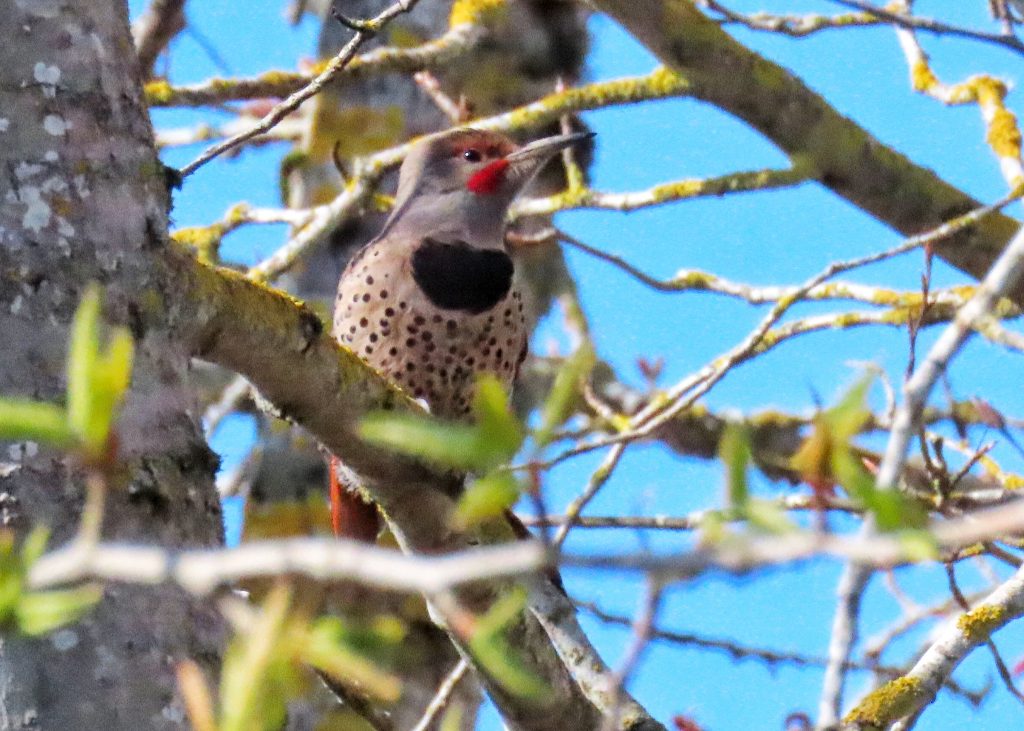
https://www.allaboutbirds.org/guide/Northern_Flicker/id
https://www.audubon.org/field-guide/bird/northern-flicker
Size- 12” tall
Habitat- forest edges and openings. Seldom found in unbroken forest.
Range- Region wide in the PNW
Eats- Favors ants; also eats beetles and other insects, seeds and nuts, and will come to feeders.
Flight Season- Year around
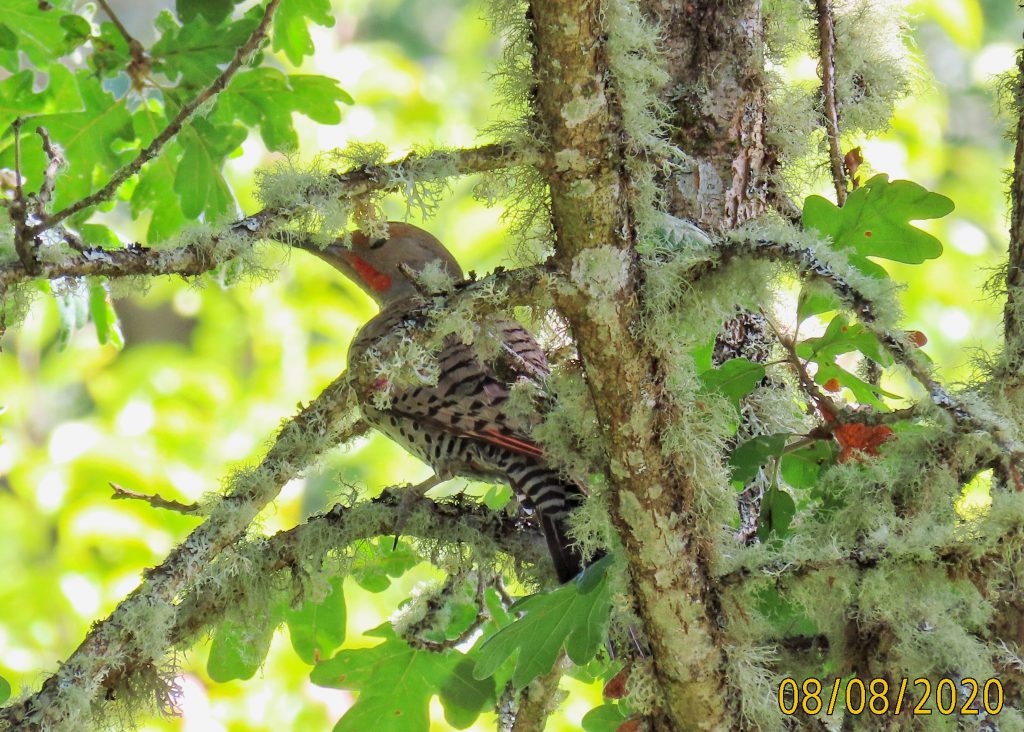
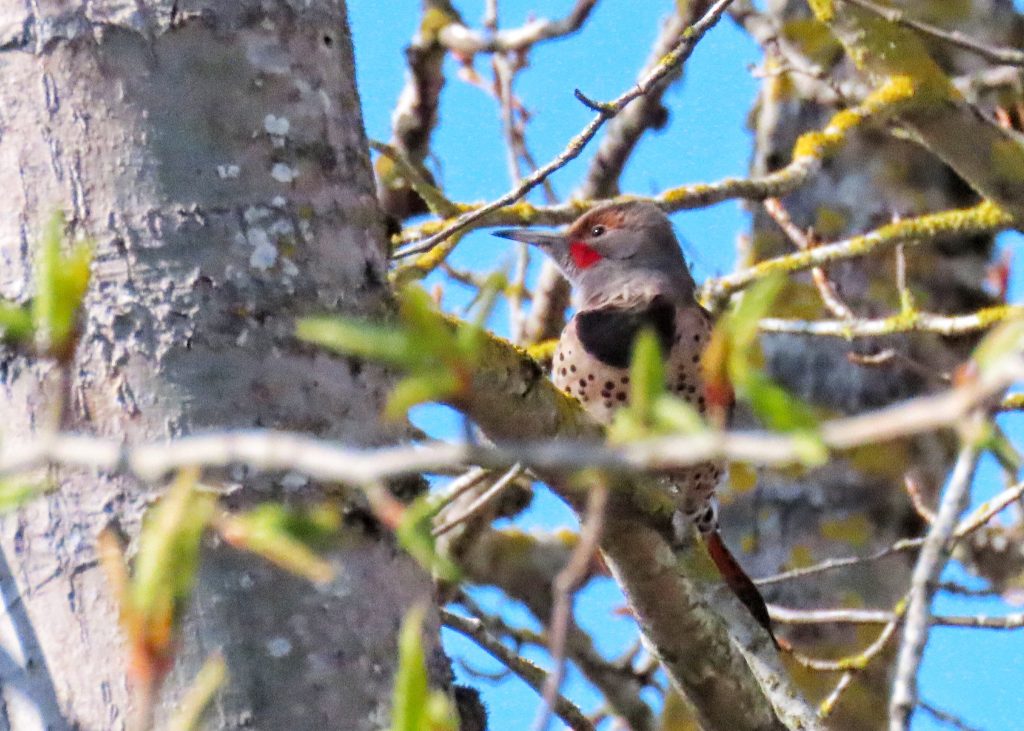
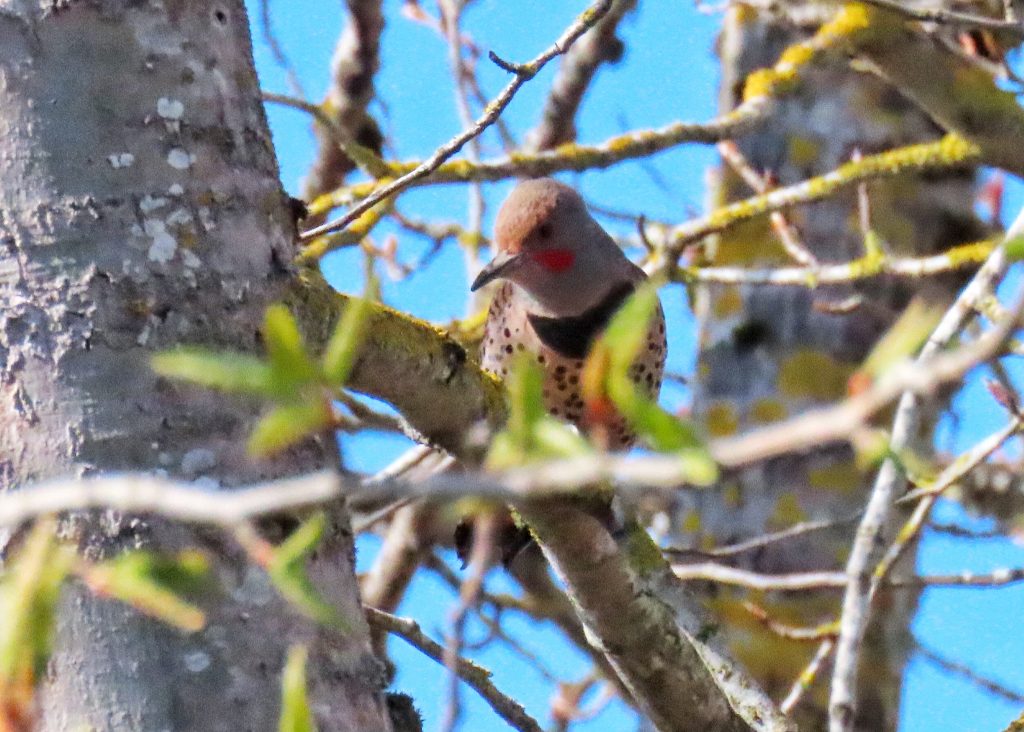
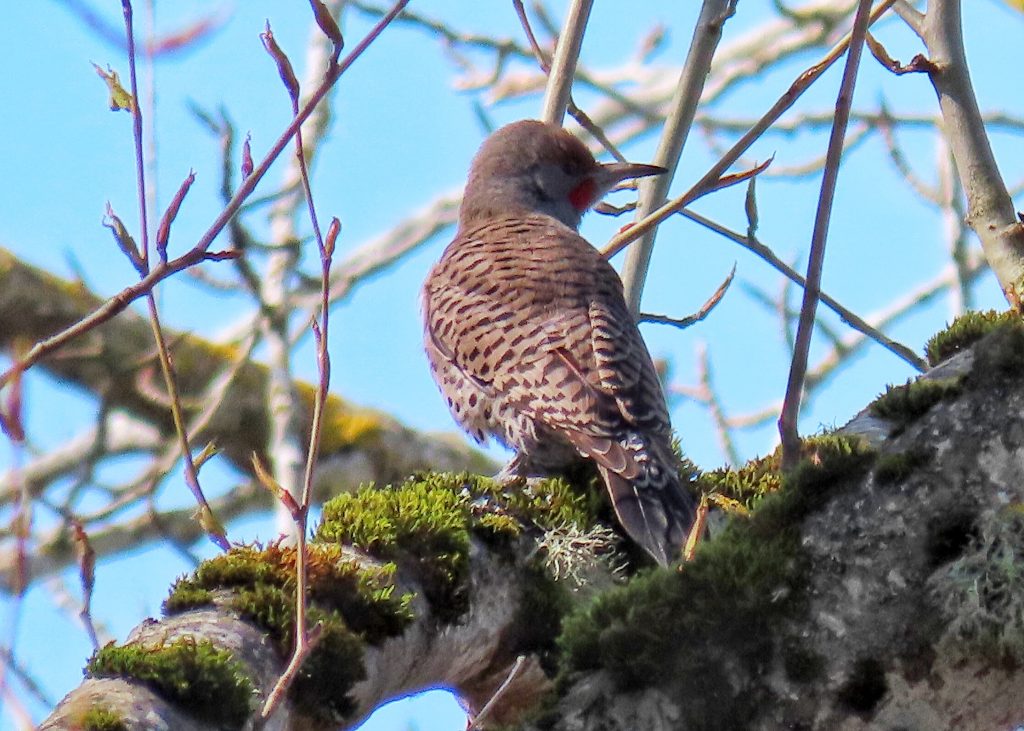
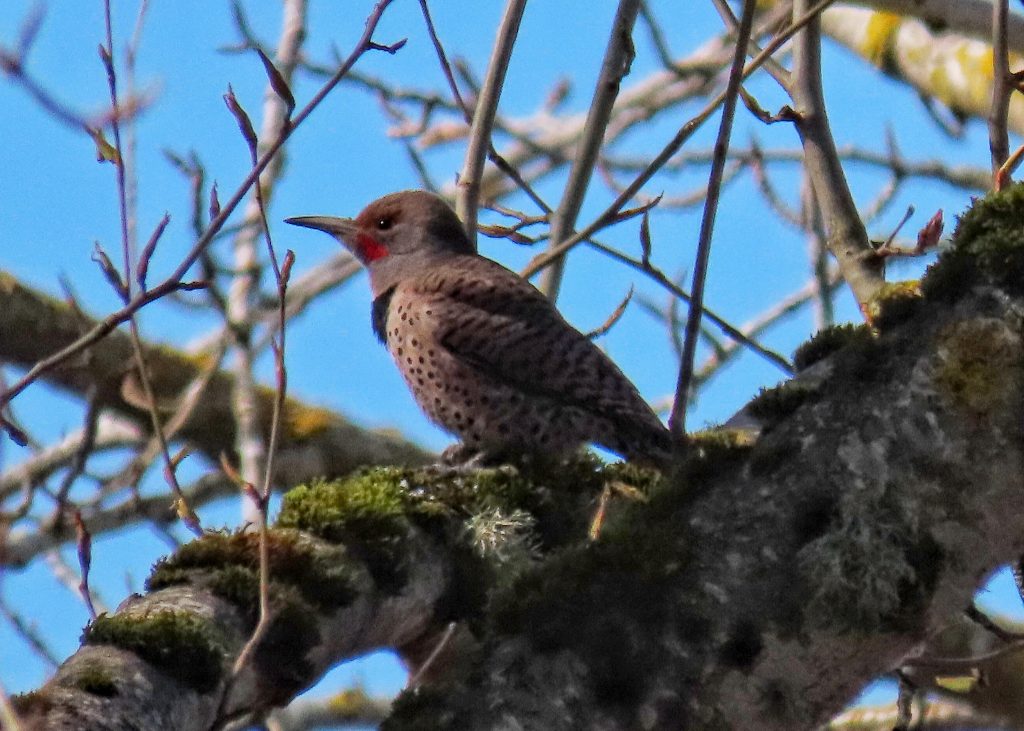
1 thought on “Colaptes auratus (Northern Flicker)”